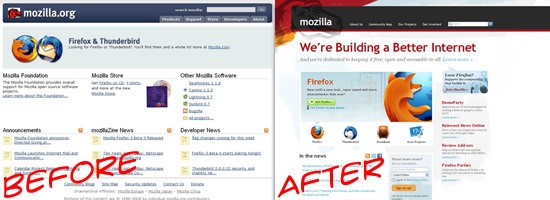
Understanding the coding of web designing and development is essential for business owners and the general public. For a site to be successful, it must combine form and function. This article will be focused on HTML, CSS HTMLScript, JavaScript, Responsive web design. This article should help you gain some knowledge in these areas. We hope you are inspired to explore more. If not, you might consider learning HTML, CSS and JavaScript.
HTML
HTML code for web designing is the language used to create web pages. Its structure is what tells a web browser which pages to display. Web developers wrap content in a way that the visitor prefers. Basic HTML tags control font size, background color and basic formatting options. A professional web design can be achieved by using the right HTML tags. These sections will teach you how to use HTML when web designing.
CSS
While HTML is the standard markup language used for web page layout, CSS is the language used to style the content of a website. CSS is different from HTML because it specifies the presentation styles and not just the content of a webpage. HTML uses tags to organize content and selectors that allow for block statement syntax. CSS, however, specifies the exact style and location of content. CSS is the language which determines the design and look of a website.

JavaScript
JavaScript is a popular scripting language in web design. These languages can be used to create rich UI components, such as pop-ups, accordions, tabs, and accordions. JavaScript has also become popular for in-browser games. There are many JavaScript games engines. Some of the most popular ones are Backbone, DarlingJS, JawsJS, and Xamarin. Brendan Eich developed the language while he was working at Netscape.
Responsive web design
Three key components of responsive web design are flexible layouts and media queries. These three components are used to create responsive web designs that can adjust their size based on screen orientation and screen size. Flexible layouts are able to use relative length units (em or percentages) to define common grid property values. Smart fixes can be used in some cases to address issues with mobile devices. But, these methods don't always deliver the desired results.
Wireframes
A wireframe is a key tool in website design. This visual blueprint will outline how your site will function. It will also show you what elements will be found on each page and how users will navigate through it. It is essential to understand wireframes and when they are appropriate for your project. These are some ways to make wireframes more effective. Learn more. However, before you design your website, you need to be familiar with the process.
HTML markup
HTML markup is the basis of a website design. It includes four main components. These are tags and character-based data types. They also include entity references and stylesheets. HTML tags are often used to refer only to one element. HTML also supports multilingual content. Most web browsers can recognize them. These are the most commonly used HTML. This article will go over a few more.

HTML vs CSS
There are pros & cons to HTML vs CSS web designing. While HTML is an essential language for web development, CSS is a powerful alternative for advanced design tasks. HTML is completely free but CSS doesn't take into account case and must be formatted correctly to work with different browsers. HTML is widely used today, even though both languages have pros and cons. It speeds up websites and works well with many devices. HTML is simple to use and compatible with all types of browsers.
HTML vs JavaScript
Many people wonder how JavaScript is different from HTML for web design. There are many advantages to both. HTML provides the structure of a website. JavaScript offers programming functionality. Both languages have the ability to create and manipulate objects based on user input. Both HTML and JavaScript offer different types of tags as well as inbuilt functions. JavaScript allows programmers manipulate data in a variety ways and supports object-oriented programming techniques, such as prototypal inherit.
FAQ
What is a responsive design web design?
Responsive Web Design, also known as RWD, is a way of designing websites so that content displays on all devices. This includes desktop computers, tablets (tablets), smartphones, etc. This allows visitors to view the website on one device and access other features like buttons, navigation menus, etc. RWD is intended to ensure that any user viewing a site views the exact version on their screen.
For example, if you were building a website for a company whose products sell primarily through eCommerce, you would want to ensure that even if a customer viewed your website on a smartphone, they could easily purchase items from your store.
A responsive site will adapt to the device used to view it. So, viewing the site on your laptop will look like a standard desktop website. However, if you're viewing the page on your phone, it will display differently.
This allows you create a website that looks great on any device.
What is a static website?
You can host a static website anywhere you like Amazon S3, Google Cloud Storage and Windows Azure Blob storage. Rackspace Cloud Files, Rackspace Cloud Files. Dreamhost, Media Temple. In addition, you can also deploy a static site to any platform that supports PHP, such as WordPress, Drupal, Joomla!, Magento, PrestaShop, and others.
Static websites are typically easier to maintain, as they don’t have to constantly send requests between servers. A static web page loads faster as there is no need to forward requests back and forth among servers. Static web pages are better for small businesses that don't have enough resources or the time to maintain a website.
What should I include in my Portfolio?
These are the things you should include in your portfolio:
-
You can also see examples of your previous work.
-
Links to your website (if applicable).
-
Your blog may have links
-
Links to social media profiles
-
Here are links to portfolios online of other designers.
-
Any awards you've received.
-
References.
-
You can also send us samples of your work.
-
Here are some links that will show you how to communicate with your clients.
-
These are links that show you're open to learning new technologies.
-
Here are some links to show you are flexible.
-
Links that show your personality
-
Videos showing your skills.
What is a static site?
A static website is where all content is stored on a server and accessed by visitors via web browsers.
The term "static" is used to refer to the absence of dynamic features like changing images, video, animations, etc.
This site was originally designed for intranets. However, it has been adopted by small businesses and individuals who need simple websites with no custom programming.
Static websites are becoming more popular due to their ease of maintenance. It's easier to update and maintain static sites than a website that has many components (such blogs).
They also tend to load faster than their dynamic counterparts. This makes them great for those who have slow Internet connections or users with mobile devices.
In addition, static sites are more secure than their dynamic equivalents. A static website is impossible to hack. Hackers can only access the data contained in a database.
There are two main ways to create a static website:
-
Use a Content Management System (CMS).
-
Static HTML Website Creation
Which one you choose depends on your requirements. A CMS is my recommendation if your first website was created.
Why? Because you have complete control over your website. A CMS means that you don't have to hire someone to set up your website. Upload files to the web server.
You can still learn code and create static sites. However, you will need to put in some time to learn how to program.
Can I create my own website with HTML & CSS?
Yes, you can! Basic knowledge of web design and programming languages such as HTML (Hyper Text Markup Language), and CSS (Cascading Stil Sheets) is required. These languages enable you to create websites that are accessible to anyone with an internet connection.
Statistics
- It's estimated that in 2022, over 2.14 billion people will purchase goods and services online. (wix.com)
- It enables you to sell your music directly on your website and keep 100% of the profits. (wix.com)
- Did you know videos can boost organic search traffic to your website by 157%? (wix.com)
- At this point, it's important to note that just because a web trend is current, it doesn't mean it's necessarily right for you.48% of people cite design as the most important factor of a website, (websitebuilderexpert.com)
- When choosing your website color scheme, a general rule is to limit yourself to three shades: one primary color (60% of the mix), one secondary color (30%), and one accent color (10%). (wix.com)
External Links
How To
How can I get started as a UI designer?
There are two paths to becoming a UI design:
-
You can earn a degree in UI Design by going to school.
-
It is possible to start a freelance career.
To go to school, you will need to enroll in college or university for four years. This includes art, computer science, business, marketing, psychology, etc.
You can also take classes at community colleges or state universities. Some schools offer tuition-free programs while others charge tuition.
You'll need to find work once you have graduated. If you are going to be working for yourself, you will need to build your client list. It is essential to establish a professional network so other professionals know you exist.
There are many opportunities to intern for companies that specialize on developing web applications. Many companies hire interns in order to gain valuable experience before they hire full-time employees.
Your portfolio will help to get you more work. You should have work samples and information about the projects you worked on in your portfolio.
It is a smart idea to send potential employers your portfolio via email.
As a freelancer, you will need to market yourself. You can post your services on job boards, such as Guru, Indeed, Guru or Upwork.
Freelancers frequently receive assignments from recruiters who post jobs online. These recruiters search for qualified candidates to fill positions within specific industries.
These recruiters provide candidates with a project description that details the position's requirements.
While freelancers aren't required to sign contracts for a long time, they can still be paid. If you are looking to make a move, however, it is advisable to negotiate an upfront payment.
Many designers prefer working directly for clients and not through agencies. This may sound ideal but many people lack the skills.
Agency workers are often well-versed in the industry they work in. They have access the right training and resources to ensure they produce high-quality results.
Agency workers often receive higher hourly rates in addition to these benefits.
One downside to working through an agency is the inability to have direct contact at work with the employer.
As a UI designer you need to be motivated, creative, flexible, detail-oriented and communicative.
It is also important to have great verbal and written communication skills.
UI designers are responsible in designing websites through the creation of user interfaces (UI), as well visual elements.
They are also responsible for ensuring that the site meets the needs of its users.
This includes understanding the information that visitors require and how the site should function.
Wireframes can also be created by UI developers using a variety o tools. Before beginning to design, they use wireframing.
It is easy to create your own wireframes using the online templates.
Some designers specialize in UI design alone, while others combine UI with graphic design.
Graphic designers use software such as Photoshop to edit images.
Adobe InDesign is then used to layout pages and layouts.
Photographers capture images using digital cameras or DSLRs.
They then upload the pictures to a photo editing program where they add text captions, filters, and other effects.
Afterward, the photographer saves the image in a file format compatible with the website.
It is important to take into consideration all aspects of the design process when building a website.
This includes research, planning, wireframing, prototyping, testing, coding, content creation, and publishing.
Research - It is crucial to conduct extensive research before beginning a new venture.
Planning - Once your research is complete, you can begin to create a plan.
Wireframing - A wireframe is a preliminary sketch of a web page or application.
Prototyping - Prototypes help ensure that the final product matches the initial vision.
Testing - Multiple rounds of testing should be done on the prototype to make sure it works properly.
Coding - Coding refers to the process of writing computer code.
Content Creation - This includes everything from managing social media accounts to writing copy.
Publishing involves uploading files on a server to ensure that the site is accessible.
You will be required to study about other projects in order to work as a freelance UX/UI design.
For example, some companies only require wire frames, whereas others require full prototypes.
You may be required to perform specific tasks depending on the project you accept.
You might, for example, be asked to create multiple wireframes if you're being hired to do wireframe design.
You may need to develop a functional version of the site if you are hired to build a prototype.
No matter what type of project you are working on, it is important to have good interpersonal skills.
Referring freelancers is the best way to get work. It's important to establish good relationships with potential employers.
In addition, you must be able to communicate effectively both verbally and in writing.
Portfolios are an essential part of any freelancer’s toolbox.
It showcases the quality of your work as well as your ability and willingness to provide high-quality results.
This is possible by creating an online portfolio.
You can find similar websites to yours online to help you get started.
These sites can be searched to determine which services they offer.
Once you have determined the best practices for you, you can begin to adopt them.
It is also a good idea to include links in your resume to your portfolio.